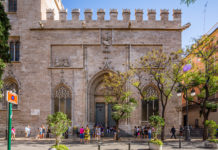Chateau Vaux le Vicomte, Maincy, France
Chateau Vaux le Vicomte lies less than an hour’s drive to the southeast from Paris. Architect Louis Le Vau, landscape architect Andre Le Notre, and decorator Charles Le Brun worked together for the first time to create this expansive estate, considered a masterpiece of French Baroque residential architecture. This collaboration led to the ‘Louis XIV style’ that combines architecture, interiors, and landscape design.

Nicolas Fouquet, the Finance Minister of Louis the XIV, built the chateau in the seventeenth century. During my brief visit here, the guide shared that this estate inspired the legendary Château Versailles formal gardens. I felt an elation similar to what I experienced while visiting Hoshang Shah’s tomb in Mandu, the inspiration for the Taj Mahal.

And the king goes charging in
There is an interesting backstory about the chateau. Fouquet entertained the king in his lavish palace in 1661. While it impressed the king, just three weeks later Fouquet was arrested on the charges of treason. The state transferred a large part of the art on display in the chateau to the king’s collection and sequestered the estate. The king believed Fouquet built the mansion with money pilfered from the royal treasury.
All the same, the chateau and the gardens had dazzled Louis the XIV. He took into service the three gentlemen responsible for creating this chateau and commissioned them to create Château Versailles, and a few more regal buildings.

Estate’s Layout
In photography, we often use the principle of leading lines while composing a frame. The raison d’être of leading lines is to rivet a viewer’s attention to the hero or the primary subject in a frame. The estate layout shows a clever use of leading lines, nay, leading plains, to rivet a visitor’s attention to the central subject, the chateau. And this observation holds good whether you approach the chateau from the outside or from the gardens.

Like a centrepiece jewel in a crown, every architectural as well horticultural element on the estate augments the palace – both in visual terms, and in stature. From the entrance past the grille punctuated with squared stone pillars, the wide staircase that approaches the building imparts grandeur. And as you approach from the gardens, you see beds of box hedges patterned like brocade giving a feel of a red carpet (in this case, a green carpet) welcoming you to a grand structure. To further enhance the effect, a moat surrounds the manor house.

Andre Le Notre laid out the gardens using perfection in symmetry and geometry. He ensured each tree and hedge was trimmed to perfection to enhance the beauty through harmony. The fountains, sculptures, trees, pools, and hedges are all laid out along a grand central axis. Two cross axes mark the central axis, not only to provide visual relief but also to unify the lavish spread of the garden.
The Interiors
As you pass through the vestibule to enter the grand salon, you realise the cavernous hall is flanked by ante-chambers, chambers, and cabinets. Like the grounds outside, even the structures within follow a strict symmetry – the eastern and western halves are near-mirror image of each other. Fouquet had plans to reserve the eastern half for the king, and the western half for his own use. Reserving accommodation for the king was an established practice in most aristocratic residences during those days, as the king travelled often.

The set of three arches as you approach the vestibule from the entrance are aligned with the arches leading to the salon, and to the gardens. So, you can see the central axis of the garden even before entering the palace. The primary rooms are all on ground floor. That explains why there is no grand staircase, a standard feature for most chateaux of the time. Or maybe the absence of a grand staircase caused the main rooms to be placed on the ground floor.
A huge slate dome surmounted by an imposing lantern covers the double height grand salon. The staircases within provide an interesting visual effect. Architect Le Vau borrowed the concept of a central salon from Italy.

The Current Owners
From disrepair to restoration, the chateau has seen it all. The current owners, the de Vogue family (the fourth family to own it) brought it back to its original glory and an aristocratic lived-in look. After acquiring it in 1967, they threw the estate open to public in 1968. During your next Paris trip, make time to visit it and experience opulent living at its best here.
Next week, I’ll take you 25 km further south to another chateau inscribed on UNESCO World Heritage List.


























